Showcasing student research
Engineering undergraduate students share their summer research experiences.
By: Brooke Fisher
Photos: Dennis Wise/University of Washington
Top image: In the Quantum Technologies Training and Testbed lab, undergraduate Enrique Garcia prepares to remove a diamond sample from a quantum processor.
At a top-tier research institution like the UW, research doesn’t take a summer break. In addition to graduate students and postdoctoral researchers, many College of Engineering labs host undergraduates during the summer months, giving the students a unique, hands-on experience conducting cutting-edge engineering research alongside faculty.
The exchange is a win-win: Students can pursue ideas and interests that they’re passionate about, and in the process they sharpen their analysis, communication, design and fabrication skills. Although still undergraduates, the students play an important role in supporting faculty-driven research and advancing the College’s areas of impact.
Here, four undergraduate students share highlights from their summer research experience in labs focused on clean energy, quantum, health and the environment and how it helped prepare them for future engineering aspirations.
Bit by qubit: Advancing quantum computing
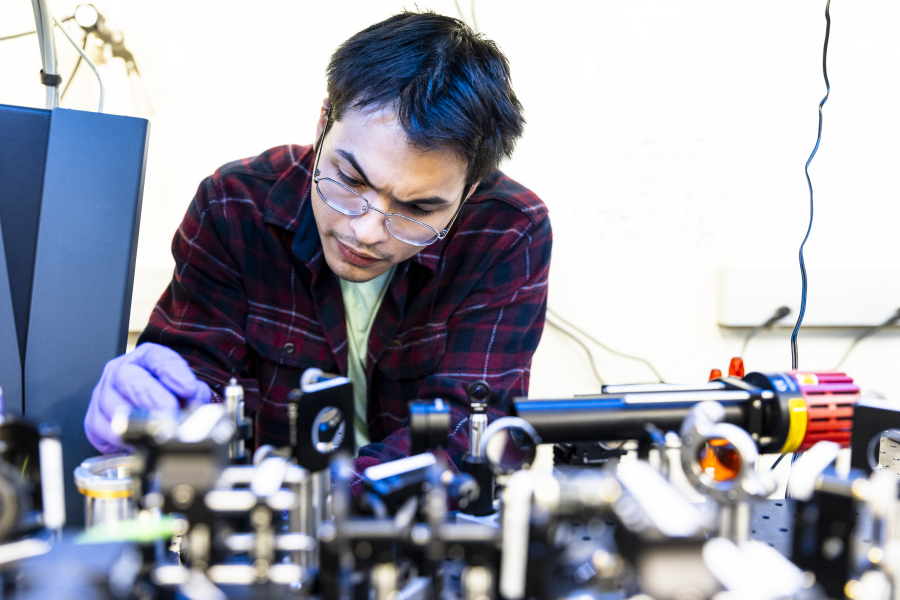
This past summer, undergraduate Enrique Garcia dealt with diamonds. More specifically, he designed an antenna for a diamond quantum processor, a promising technology for the next generation of computing.
“This level of learning is not something that I’ve previously had at an internship,” says Garcia, a senior in electrical and computer engineering (ECE). “This is a lot more exciting, it feels like I’m actually problem-solving on my own.”
Working in the Quantum Technologies Training and Testbed (QT3) lab, Garcia helped to accelerate research in the growing field of quantum computing, which aims to process information more quickly than classical computers.
“The quantum computer is still at a transition stage — it was developed by physicists, but the hard work is now in the engineering realm”
The antenna will be used for radio-frequency control of quantum bits, called qubits, which are naturally found in the impurities in diamond. Much like traditional computer bits that are represented by either a zero or one, qubits have the potential to store and transfer information. One challenge is controlling the qubits’ spin properties in order to manipulate the transfer of information.
“The point of the antenna is that it’s able to transmit microwave magnetic fields and with those fields it can cause oscillation between different spins and we use that as the zeros and ones of our qubits that we are trying to define,” explains Garcia.
By the end of summer, Garcia planned to have his design fabricated onto a two millimeters squared diamond sample. But his quantum research didn’t end there — Garcia is working in the lab this school year before pursuing a career in photonics, which he says “may eventually lead me back to quantum.”

A hot topic: The impact of artificial turf
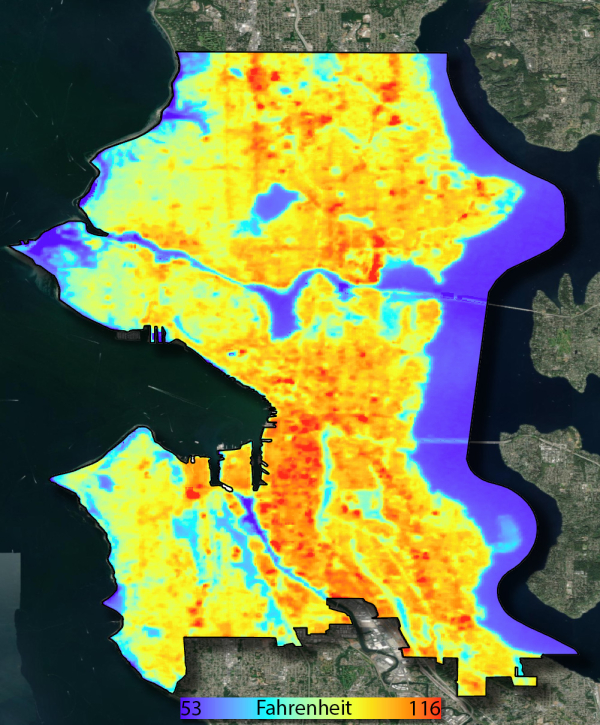
It’s not uncommon to frequent parks during the summer, but for environmental engineering undergraduate Aaliyah Morris the reason was a bit different — she was researching the temperature effects of artificial turf.
“We are investigators and surveyors,” explains Morris, who collaborated with undergraduate Jack Sanfilippo from the UW School of Environmental and Forest Sciences. “The project overall is about understanding artificial turf and the environmental relationships it has with our communities.”
Since little is known about the temperature effects of artificial turf, such as the amount of heat it may generate, the goal of the research is to enable community groups and designers to make informed decisions about material choices. Funded by a Spark Grant, the project originated from conversations between civil and environmental engineering faculty Becca Neumann and David Butman, who noticed an increase in both public and private residences with artificial turf.
“Although some people may contend it saves water resources, it might not all be positive because this replaces grass with a petroleum-based product. You’re also ripping out an entire ecosystem below ground,” says Butman, who has noticed via satellite imagery that the hottest areas of Seattle are places with artificial turf, such as stadiums.
At Seattle’s Yesler Terrace and Mount Baker parks, the students gathered data about turf, as well as wood chips and grass for comparison. Data included temperature variations, carbon dioxide fluxes, water-holding capacity and light reflectance. Since the turf can reach temperatures as high as 160 degrees Fahrenheit, Morris also interviewed park users about their experiences on hot days.
The hands-on project aligned with Morris’ passion for the environment and public health. Post-college, she hopes to positively impact the community: “My goal is to nurture Seattle today, for a better Seattle tomorrow,” she says.
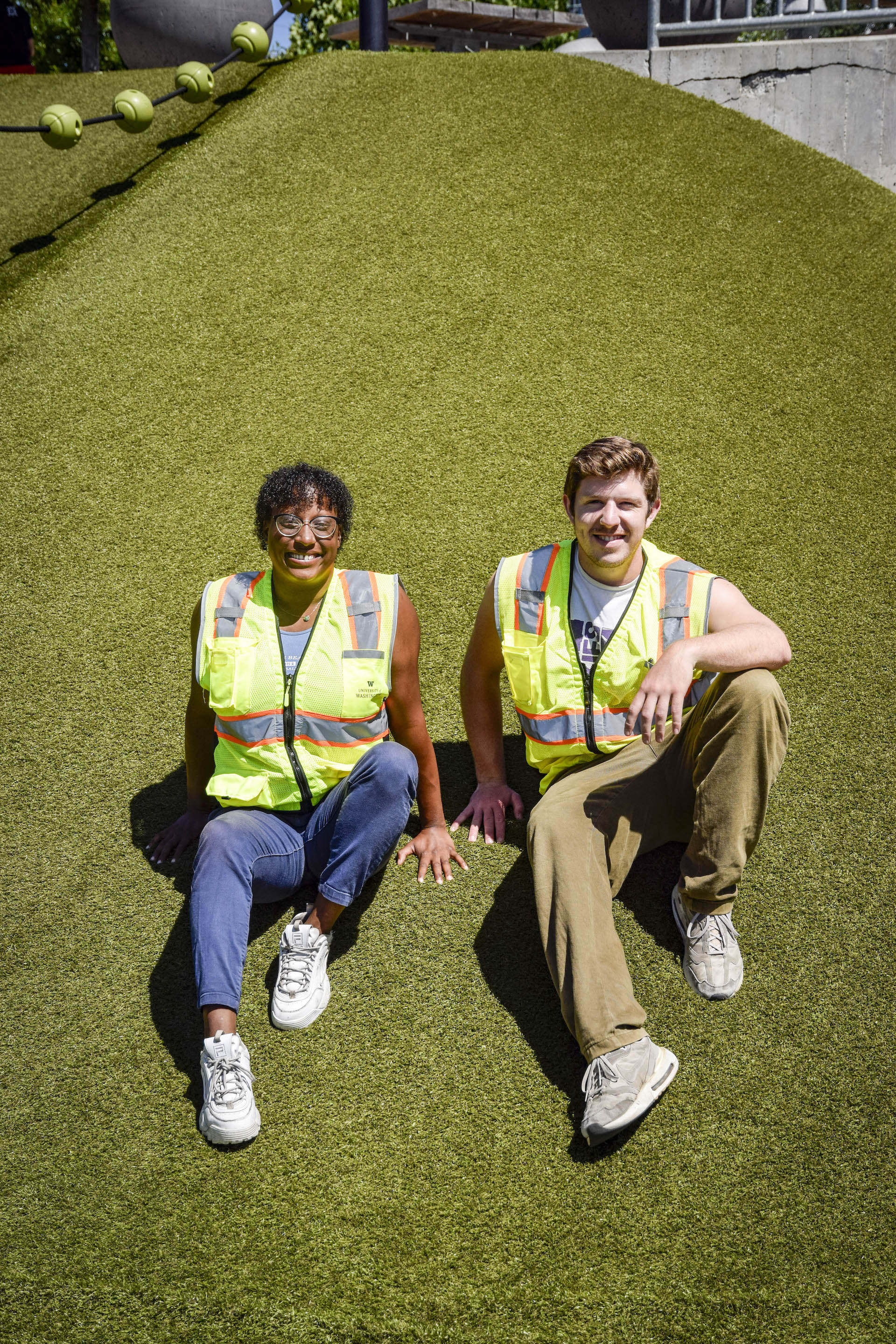
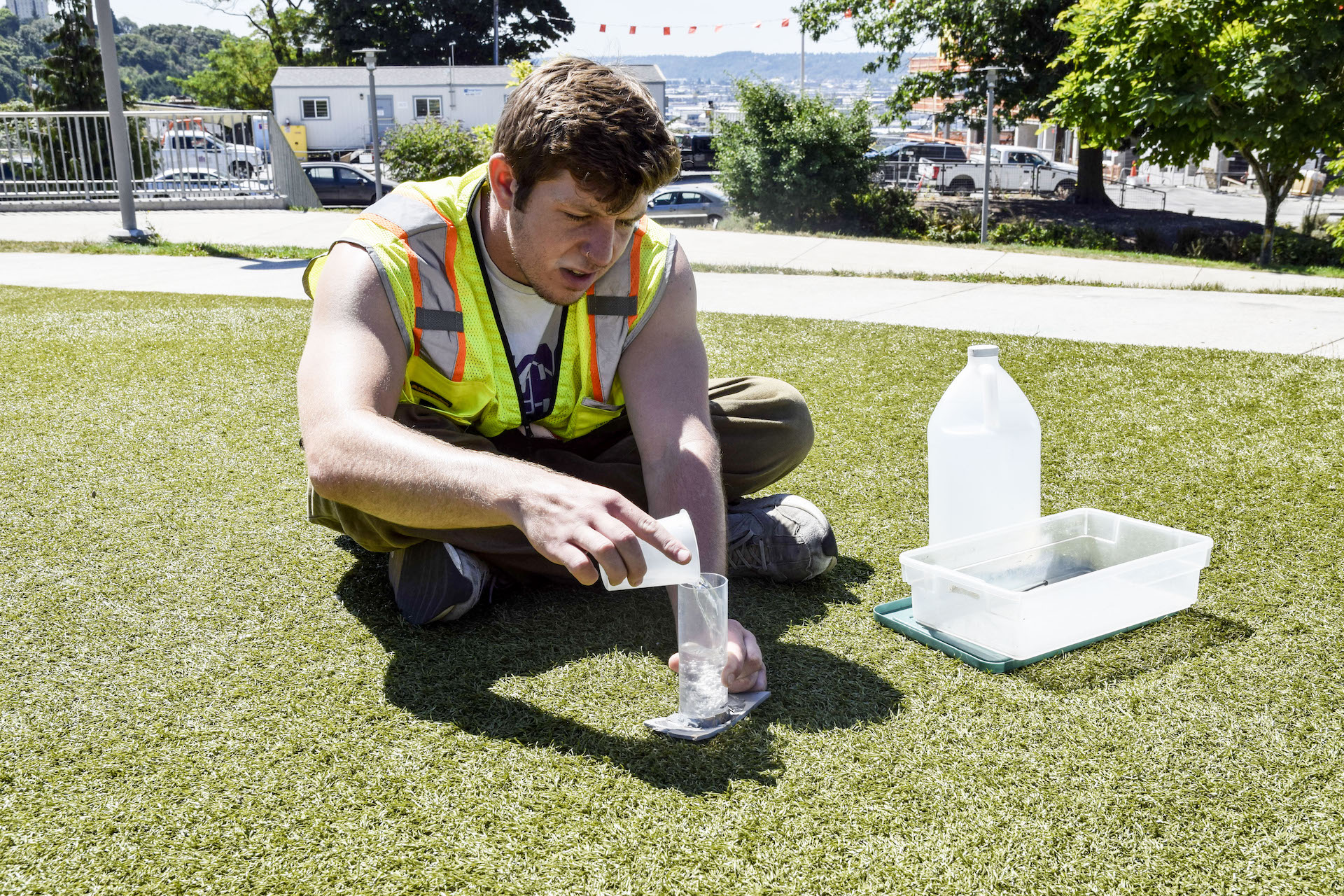
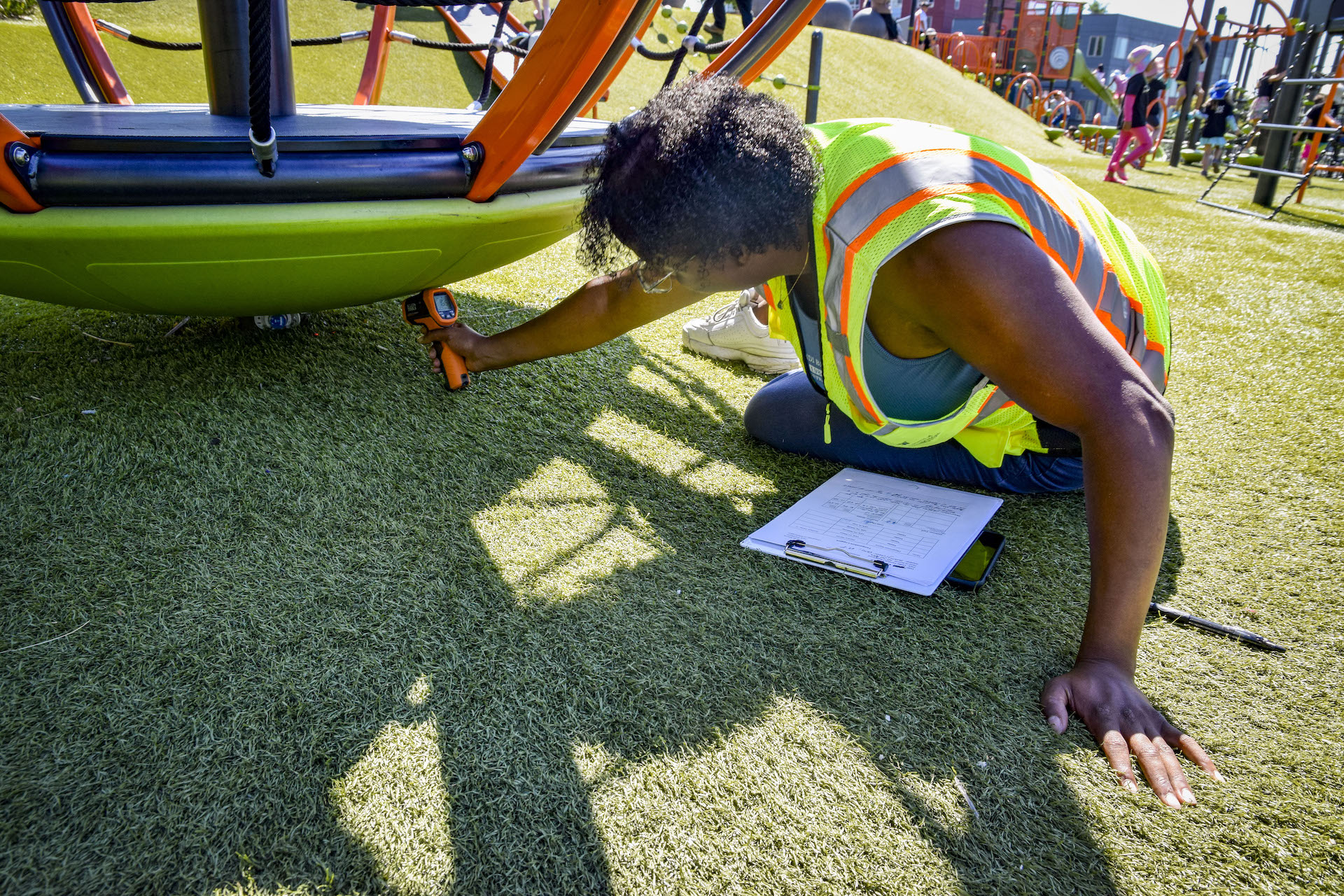
Left: Sitting in front of a hill of artificial turf at Yesler Terrace Park are undergraduate Aaliyah Morris and her research partner Jack Sanfilippo. Top right: Sanfilippo measures how long it takes the artificial turf to absorb water. Bottom right: Morris records the temperature of artificial turf underneath playground equipment.
An enlightening opportunity: Solar scalability
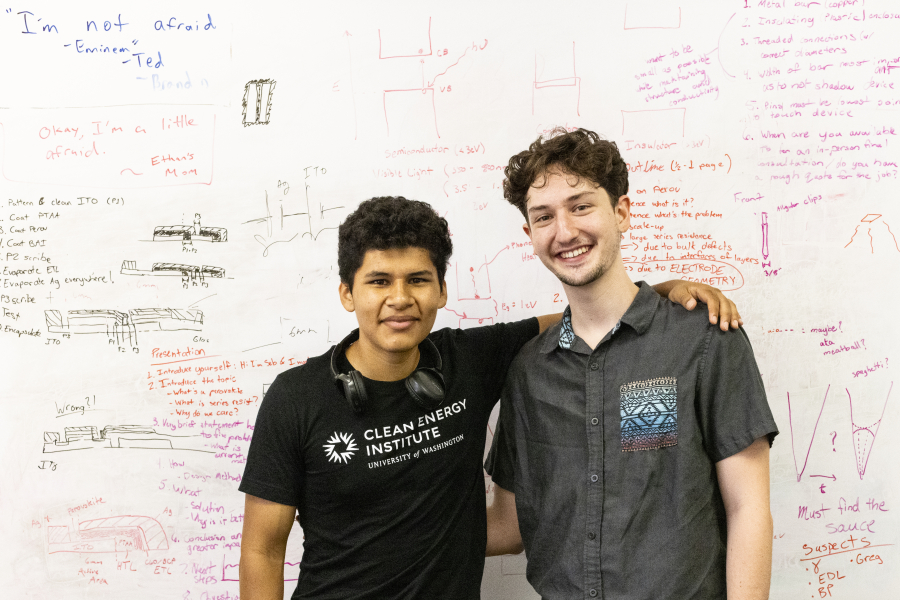
Advancing the future of clean energy is a powerful experience. Just ask mechanical engineering (ME) undergraduate Sebastian Bustos-Nuno, who worked this summer at the UW Clean Energy Institute’s Washington Clean Energy Testbeds to advance the next generation of solar cells, called perovskite photovoltaics.
“It’s pretty awesome. All of this is a first-time experience — it’s my first time working with a professor and a Ph.D. student,” says Bustos-Nuno, who first became interested in solar cells in the fifth grade during a field trip to a community college.
Funded by UW’s Alliances for Learning and Vision for Underrepresented Americans program, Bustos-Nuno helped advance a promising new technology, which crafts solar cells from the mineral perovskite, rather than silicon. While perovskite offers greater flexibility as a thin film and is lower cost, one hurdle to widespread use is scalability. As the footprint of thin film solar modules expands, it becomes increasingly difficult to extract the high currents without losing some of the energy produced.
“For clean energy to have an impact, it has to be commercialized. Closing that gap is a way to make the region a hub for clean energy”
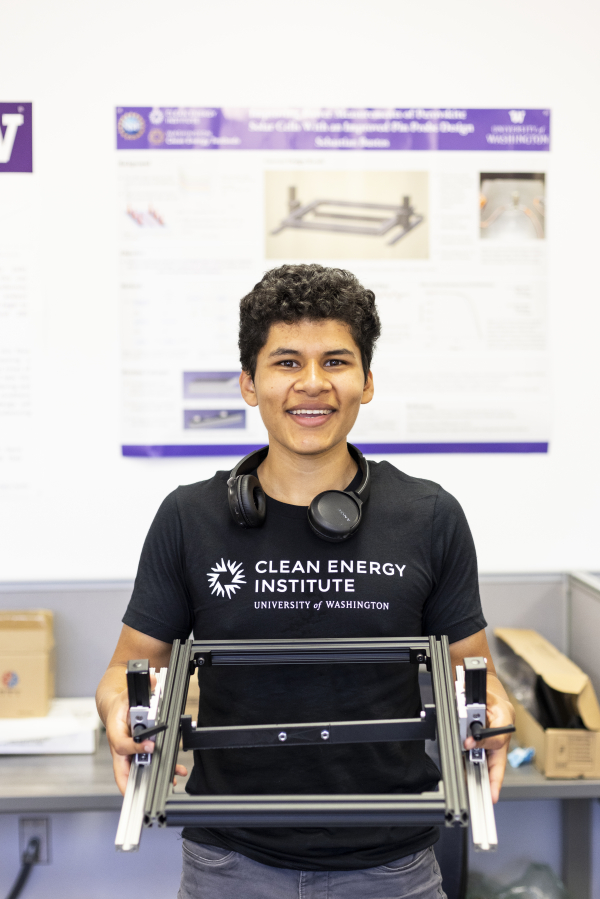
“For clean energy to have an impact, it has to be commercialized. Closing that gap is a way to make the region a hub for clean energy,” explains Washington Research Foundation Professor of Clean Energy and Associate Professor of ME and Materials Science & Engineering Devin MacKenzie, who is the Testbeds’ technical director. “Sebastian’s work centered on how to more efficiently pull power out of solar cells, which is one of the hardest but potentially most impactful parts from an engineering perspective.”
To evaluate the electrical properties of the perovskite modules, such as the current generated, and enable repeatable measurements, Bustos-Nuno designed and fabricated a testing device called a continuous probe bar station. But his work didn’t end there — Bustos-Nuno is continuing on in the lab this fall as a junior, and envisions a career either in clean energy or the aerospace industry.
“I gave him a textbook and he’s been reading it like a novel. He’s super invested,” says ME Ph.D. student Ethan Schwartz, who mentored Bustos-Nuno.
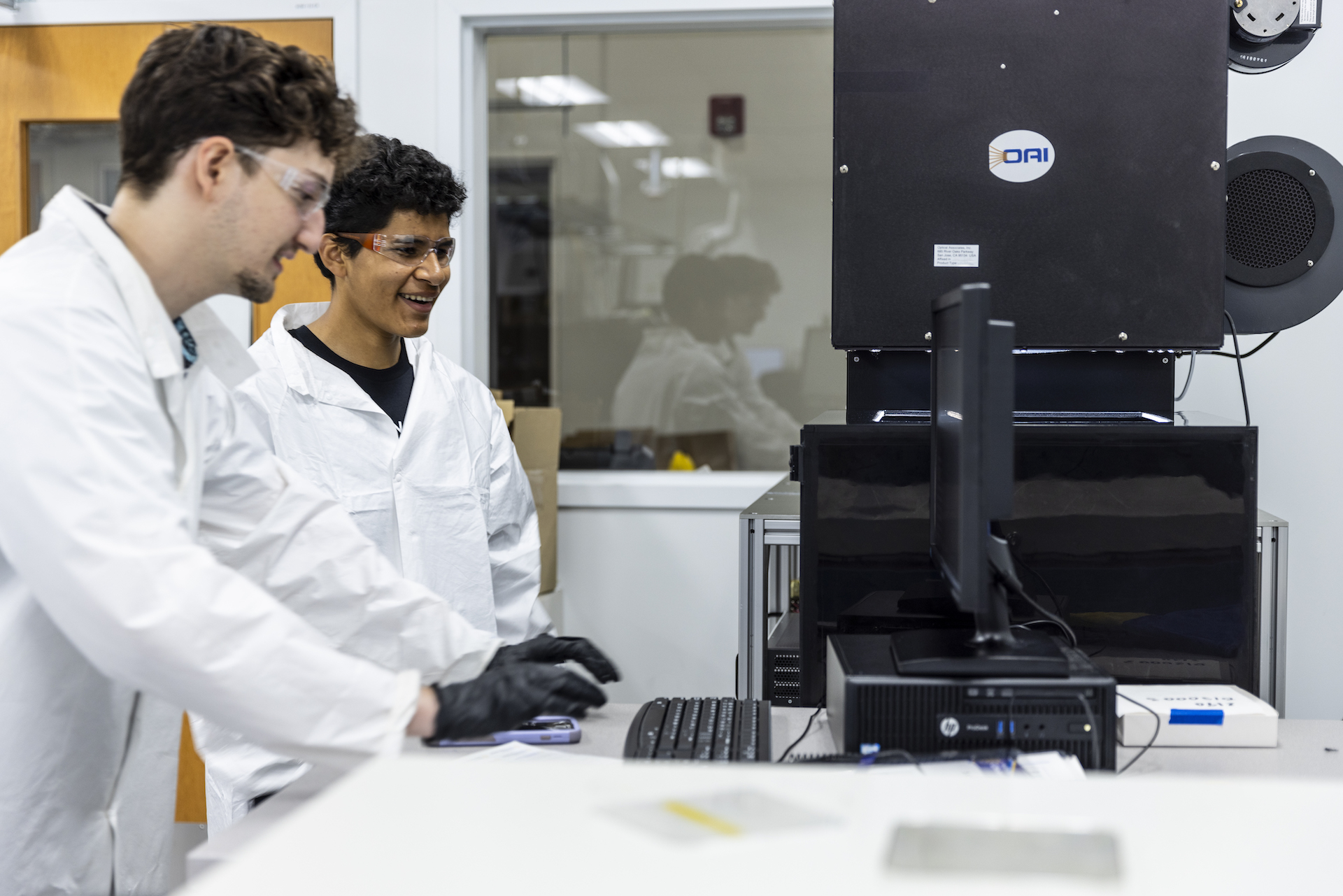
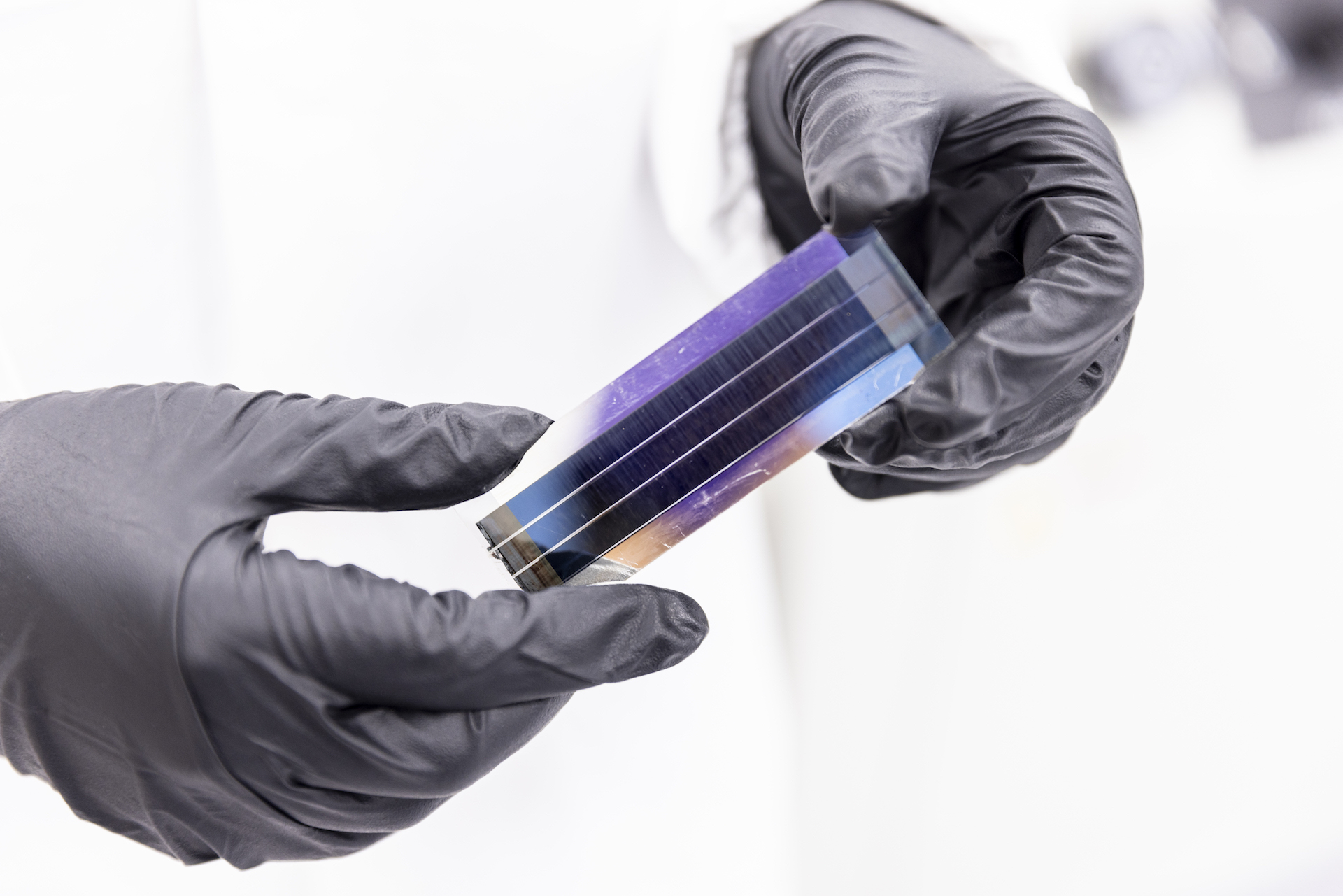
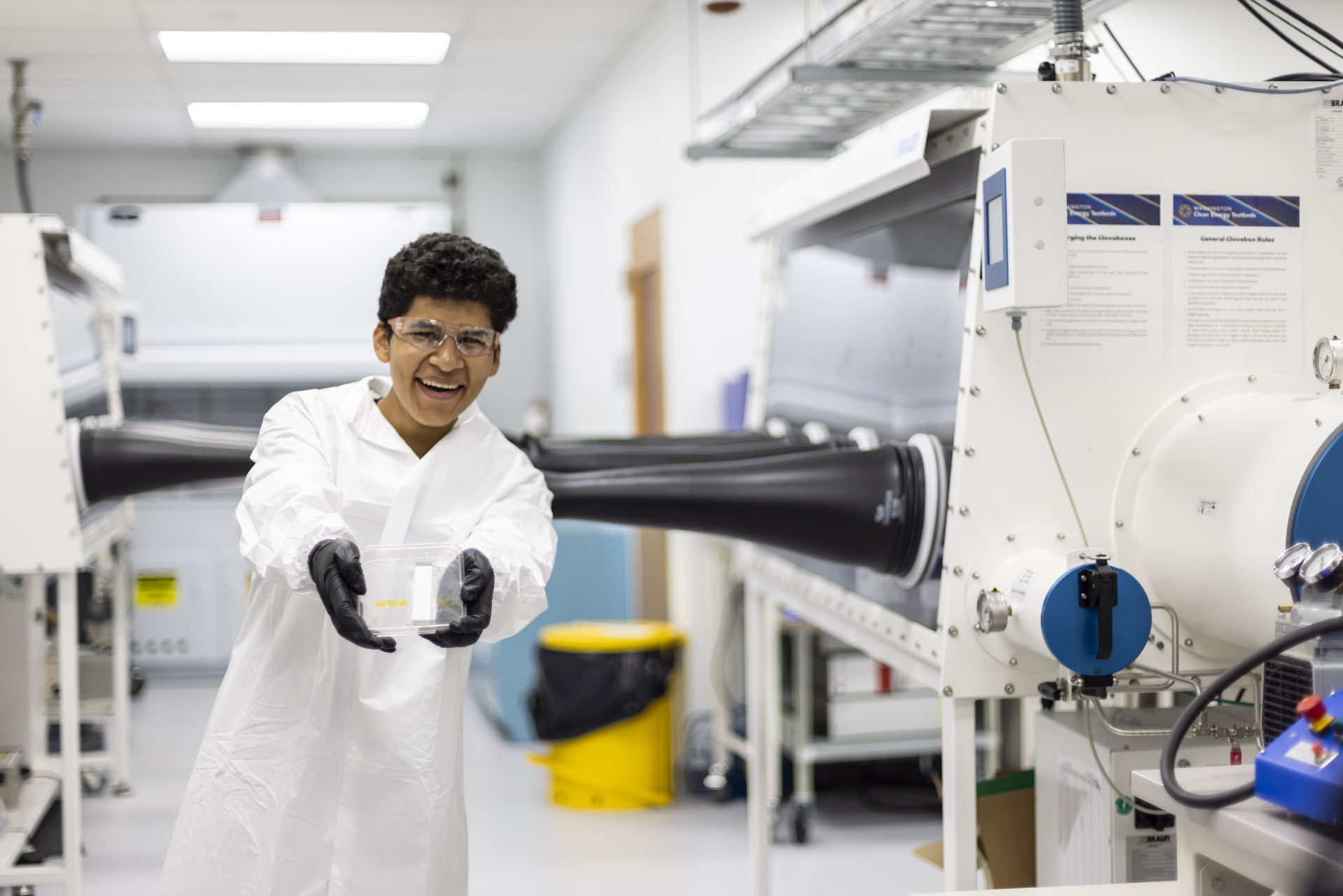
Left: Undergraduate Sebastian Bustos-Nuno and Ph.D. student mentor Ethan Schwartz power up and run a solar simulator to test the perovskite module efficiency. Top right: Bustos-Nuno holds a mini-module that has three perovskite solar cells connected in series. Bottom right: In the lab, Bustos-Nuno holds a perovskite module in a petri dish, which protects it from being scratched.
A healthy challenge: Developing targeted drug delivery for infants
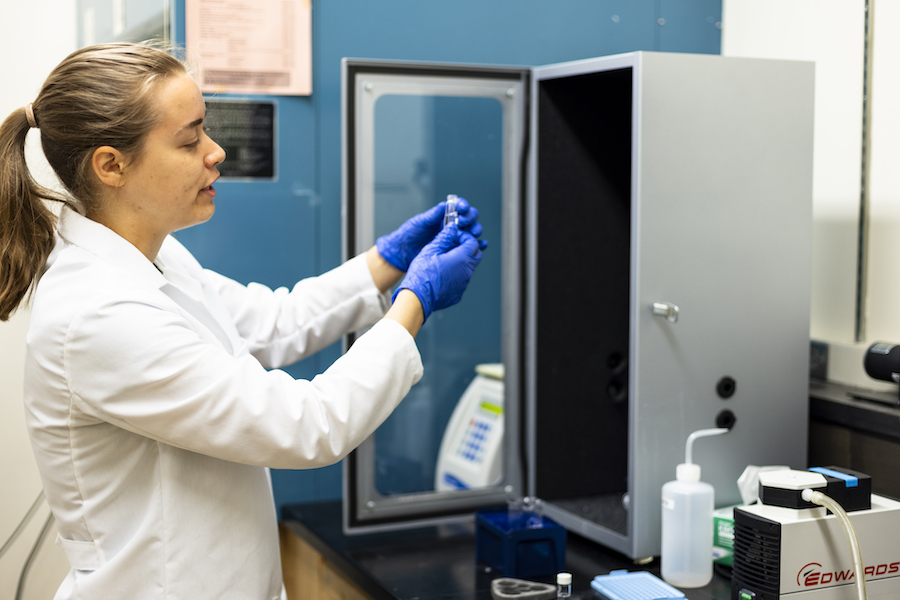
Extracting RNA from slices of brain tissue isn’t your typical summer job. But for undergraduate Sofia Dahlgren, it was part of a summer research project that drew from both her head and heart.
“I had a fantastic chemistry teacher in high school and he had Parkinson’s disease, so a lot of my interest in pursuing chemical engineering and studying neurological disease came from that,” says Dahlgren, who is a sophomore studying chemical engineering (ChemE).
Over the summer, Dahlgren helped to develop therapeutics for the treatment of neurological disease and brain injury sustained during the perinatal birth period, which is immediately before and after birth. She worked in the Nance Lab, which recently expanded its drug delivery system research to include RNA-based drugs. These show promise in targeting specific components of a cell.
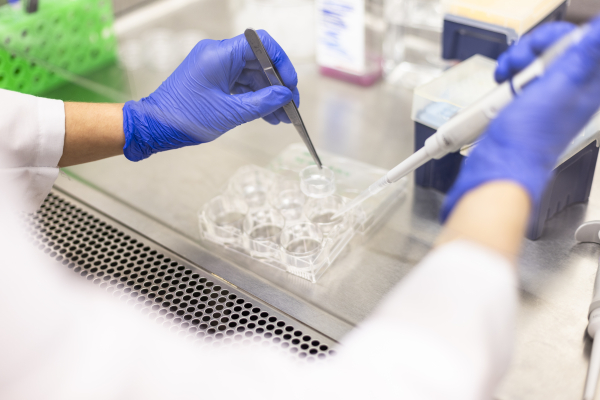
“My lab has spent a lot of time working on how to engineer systems to get into the brain and into injured cells, and not affect otherwise normal cells,” explains Elizabeth Nance, an associate professor of ChemE. “That’s where Sofia’s project came in, she’s thought about the design of the formulations, and how to get the delivery system into regions that are injured in the brain.”
Working closely with mentor Ruby Jin, a ChemE Ph.D. student, Dahlgren learned to encapsulate RNA-based drugs into delivery systems, which are tested on tissue samples to determine the performance on specific disease states. So far, they have preliminary data for improved outcomes in hypoxic-ischemic injury, a type of brain damage caused by a lack of oxygen to the brain before or after birth.
“There’s big potential for impact on a newborn’s quality of life,” explains Dahlgren, who is already considering graduate school and continues to work in the lab this fall. “A big reason the lab focuses on this area is because it’s an underserved population and a lot of therapeutics that exist are for adults.”
